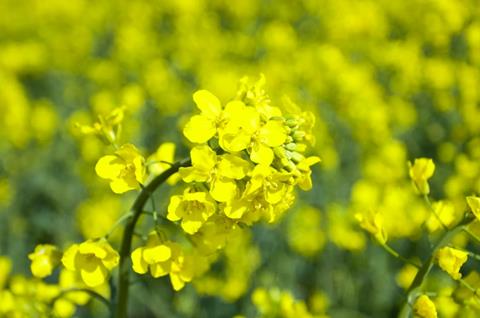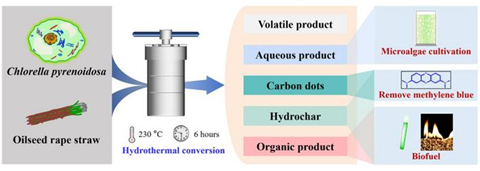Researchers from Chongqing University have developed a clean and efficient process to transform microalgae and agricultural residues into a range of high-value products, including biofuels, bio-adsorbents, and fluorescent carbon nanodots.

The study, published in Biochar, offers a sustainable way to reuse biomass resources that are often discarded or burned, contributing to renewable energy production and environmental protection.
READ MORE: Microalgae remove antibiotic residues from wastewater, reducing environmental contamination
READ MORE: Microalgae and bacteria team up to convert CO2 into useful products
The team focused on two common biomaterials: Chlorella pyrenoidosa, a protein-rich microalga, and oilseed rape straw, a widely available agricultural byproduct. Using a hydrothermal conversion process at 230 °C, the researchers converted these feedstocks into multiple useful products under water-based conditions that require no drying or harsh chemicals. The products include carbon dots, hydrochar, bio-oil, and nutrient-rich water suitable for cultivating new microalgae.
Microalgae in the lead
The microalgae-based process yielded the highest amount of carbon dots, tiny fluorescent particles measuring 1.5 to 26 nanometers across, that emit bright blue light and can act as photocatalysts for environmental cleanup.
These carbon dots degraded more than 42 percent of the dye methylene blue, demonstrating strong potential for wastewater treatment and pollutant removal.
Meanwhile, the straw-derived hydrochar showed excellent adsorption properties, removing nearly 69 percent of methylene blue with an adsorption capacity of up to 275 milligrams per gram. The co-conversion of microalgae and straw produced solid fuels with high energy content, reaching 27.8 megajoules per kilogram, comparable to some conventional biofuels.
Recycling loop
The researchers also discovered that the liquid byproduct from microalgae conversion could serve as a nutrient source for growing new algal biomass, closing the recycling loop. When used as a growth medium, this aqueous product supported microalgae productivity of 1.1 grams per liter, much higher than that achieved using the straw-derived liquid.

“Our approach makes full use of both microalgae and crop residues to produce clean energy and valuable materials simultaneously,” said corresponding author Professor Ao Xia. “It offers an integrated pathway for sustainable waste utilization and carbon recycling.”
The study provides a blueprint for producing biofuels, nanomaterials, and biological nutrients from renewable biomass, moving closer to circular bioeconomy goals.







No comments yet